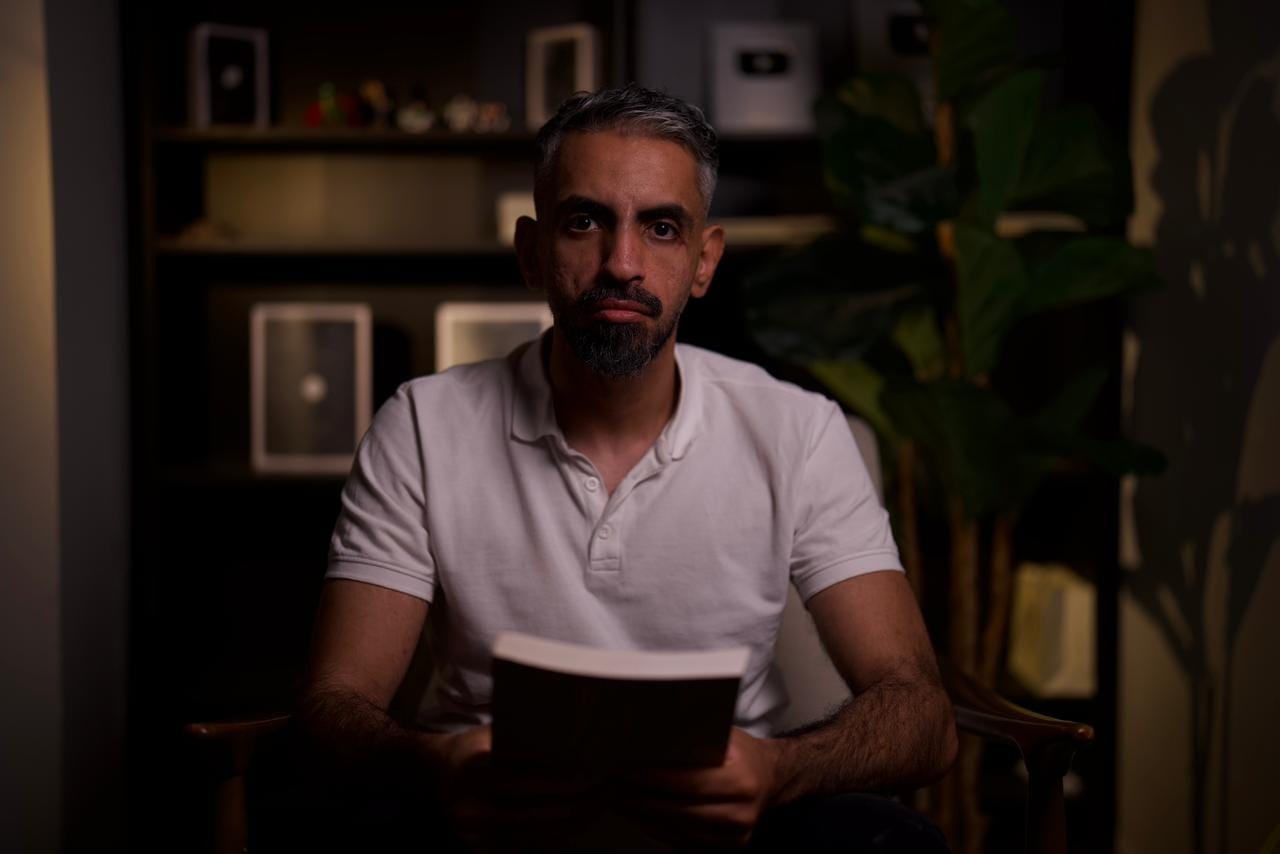When Crimes Become Stories
Author and criminal analyst Mohammad Al Shaybani meets with Al Jalees to talk about storytelling, crime investigation and literature. Read the full article now!

Mohammad Al Shaybani and the Art of Criminal Stories
For many of us, crime novel-readers, we always tend to chase the thrill of trying to catch the villain. The entire chase after the culprit in the set of storylines presented in such novels is what gives us the kick to keep reading. The pivotal moment that connected everything together and made us, alongside the story’s protagonist, come to the conclusion of who the perpetrator of the atrocious act is – that is our reward for keeping our eyes peeled throughout the novel.
Mohammad Al Shaybani is not that detective doing the chasing. In fact, as he clarifies, he is a “criminal behaviour analyst” whose work begins after a conviction is secured, when it becomes possible to examine motives and personality without doubt about guilt. Concerned with what leads to these revelations, he is more interested in the deeper motives that lie behind the act. Just like Detective Holden Ford in Mindhunter and somewhat Will Graham in Hannibal, he’s interested in the criminals’ unorthodox way of thinking – what made them who they are. And most importantly, what made them do what they got persecuted for in the first place.
Known for his crime-analysis videos on TikTok, YouTube, and Instagram, Mohammad has become the most prominent social media personality in the Gulf region specializing in crime stories and what lies behind them.
Trying to delve deeper into the minds of the condemned criminals to understand what drove them to their acts is a complex process that requires a lot of theorizing and background analyses. Mohammad’s breakthrough was to bring this to social media in a simplified yet insightful format—both educational and entertaining—that earned him thousands of followers across the Middle East.

Although he never worked directly at an active crime scene or within the prosecution, his jump to the social media spotlight came when he analyzed a crime that had dominated the news cycle – all from the comfort of his home office. He examined the criminal’s background, motives, and sociopathic tendencies so well that readers and viewers could’ve sworn he was the main detective handling the case.
Ever since then, he has been garnering attention and appreciation – not just as a crime analyst, but more importantly, for how strong his presence and storytelling style are on social media.
Everyone’s experience with social media during this last decade made us all agree on one thing: the material usually comes second to the content creator’s brand identity and personality. Almost every one of us is guilty of skipping a book, a documentary, or a YouTube video that promised to be informative just because the creator behind it didn’t have the personality to hold our attention.
When we judge a book by its cover, Mohammad is masterful at making his online persona the perfect cover for the gripping stories inside. And speaking of books, we also have to mention the four titles he has written over the last six years:
٤٠ زنزانة (2019)
محرك الدمى (2022)
الشر يتحدث (2023)
حديقة الإجرام (2025 - Published last week)
He describes them as “a personal experiment of an analyst trying to explain criminal minds and human motives for evil through real historical cases and simplified fictionalized narratives—an attempt to establish this field in the Arab world where it has not existed before.”

“I move a lot, I’m chaotic unfortunately, I don’t like staying in one place, and I think you probably suffered with me while editing this article,” he laughs. “I’m also stubborn, and I live with my depression and panic attacks, which I was diagnosed with in July 2022. Still, I’m ambitious—I feel every day must be better than the last.”
When asked about what he believes are the similarities between crimes in novels and real life, his response reassured us bookworms that they’re more similar than we might think. After all, the sociopathic tendencies behind a criminal’s wrongdoings are often rooted in emotions we see around us every day – love, hate, grief, envy, or the hunger for power. He even points out how literature sharpens this lens:
“For example, when a lover kills his beloved and then takes their own life, it is hard to see ‘love’ as the motive at first glance. But when you read Shakespeare’s Romeo and Juliet, the extremity of their deaths immortalized love in its most tragic, destructive form.”
He also mentioned how sometimes, to understand the motives and the complexities of a criminal’s personality, a background in literature gives you an edge. The philosophy behind an author’s character development can often be applied to real-life thought processes.
In the end, what makes Mohammad Al Shaybani stand out is not only his knowledge but the way he transforms raw crimes into narratives—stories that keep us turning pages, whether in books, on screens, or in his own words. He reminds us that every crime, before it’s a headline, is a human story waiting to be understood.

